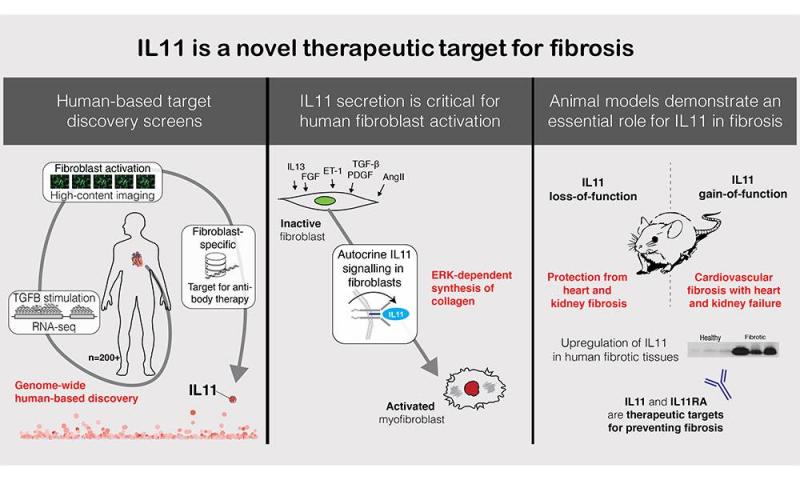
Fibrotic disease affects hundreds of millions via heart, lung, liver and kidney failure
SINGAPORE-- Researchers from Duke-NUS Medical School and the National Heart Centre Singapore have discovered that a critical protein, known as interleukin 11 (IL11) is responsible for fibrosis and causes organ damage. While it is surprising that the importance of IL11 has been overlooked and misunderstood for so long, it has now been very clearly demonstrated by this work.
A protein known as transforming growth factor beta 1 (“TGFB1”) has long been known as the major cause of fibrosis and scarring of body organs, but treatments based on switching off the protein have severe side effects. The scientists discovered that IL11, is even more important than TGFB1 for fibrosis and that IL11 is a much better drug target than TGFB1.
Fibrosis is the formation of excessive connective tissue, causing scarring and failure of bodily organs and the skin. It is a very common cause of cardiovascular and renal disease, where excessive connective tissue destroys the structure and function of the organ with scar tissue. Compared to other Asians, American, and Europeans, Singaporeans have a higher prevalence of coronary artery disease, hypertension, and diabetes, the three most common diseases that lead to heart failure. In addition, kidney failure is an epidemic in Singapore and around the world. Fibrosis of the heart and kidney eventually leads to heart and kidney failure, thus this discovery — that inhibiting IL11 can prevent heart and kidney fibrosis — has the potential to transform the treatment of millions of people around the world.
The international team, led by Stuart Cook, Tanoto Foundation Professor of Cardiovascular Medicine, along with Assistant Professor Sebastian Schäfer, both from NHCS and Duke-NUS’ Programme in Cardiovascular and Metabolic Disorders, carried out the translational research to identify the key drivers of chronic fibrotic disease in heart, kidney and other tissues. The team also includes researchers from Harvard University and University of California, San Diego/UCSD (USA), Max Delbrück Center for Molecular Medicine/MDC-Berlin (Germany), London Institute of Medical Sciences/MRC-LMS and Imperial College London (the UK), and the University of Melbourne (Australia).